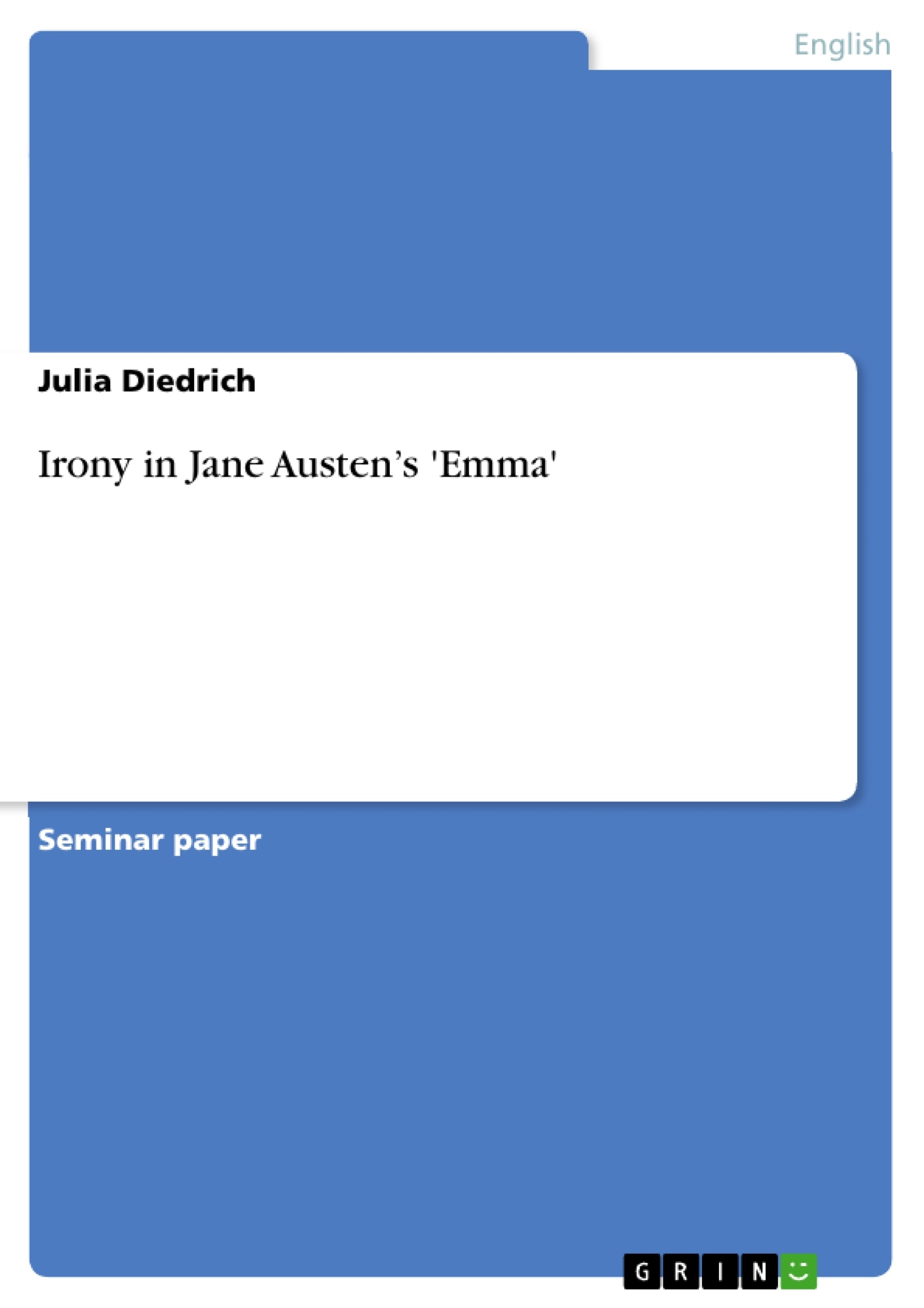Many critics still regard Jane Austen as one of the “most popular and enduring English writers of all time” (Byrne 20). Throughout the literary world, she is renowned for her skills in novel writing (cf. Trickett 162). Among other qualities, Austen has particularly been acknowledged for being a “dazzling satirist of snobbery and elitism” (Byrne 2). Concerning her novels, Emma, being published in 1816, is nowadays seen as Austen’s greatest achievement (cf. Mansell 146). Even early critics acknowledged that the special nature of this novel in comparison to what she had written before (cf. Byrne 32). According to Odmark, Emma particularly reflects how Austen successfully established and further developed methods of writing used in her earlier novels (cf. Odmark 24). The success of Emma can also be seen in the fact that it was the first of Austen’s novels which was reviewed by a famous author of her time, Sir Walter Scott (1771-1832) (cf. Byrne 32). Scott particularly pointed to the “naturalness” and “pervasive realism” Austen employed in Emma (Trickett 163). However, he also claimed that this novel had not much of a story in the traditional narrative sense (cf. Trickett 168). While the climax of a story is normally reached through a number of incidents and adventures, Austen’s Emma does not present such features (cf. Trickett 168). What is most important about this novel was summed up by the novelist Thomas Henry Lister, who praised Austen for her “rare and difficult art of making her readers intimately acquainted with the characters” of her novel (qtd. in Trickett 165). He moreover stated that Austen’s novel provides the feeling of having literally lived among these characters; “and yet she employs no elaborate description – no metaphysical analysis – no antithetical balance of their good and bad qualities. She scarcely does more than make them act and talk [...].” (qtd. in Trickett 165). In Emma, the characters themselves are thus more important than the plot in the traditional sense. This is why critics often categorize Emma and other works by Austen as “novels of manners” (Marsh 28). In a novel of manners, the writer scrutinizes and minutely presents the characters’ behaviour (cf. Marsh 28). These specific manners, in turn, serve to reflect the characters’ moral attitudes (cf. Odmark 11). By analysing these, the reader is thus enabled to understand the deeper structure of the novel and the inner-lying messages of it (cf. Marsh 28)...
Table of Content
1. Introduction
2. The concept of irony
3. Body
3.1. A general characterisation of Emma Woodhouse
3.2. Irony in the “Emma-Elton-Harriet-fiasco”
3.3. Irony in the “Emma-Frank Churchill-Jane Fairfax illusion”
4. Conclusion
5. Bibliography



